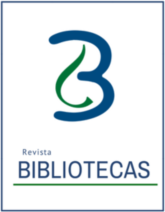Sobre la revista
CRITERIOS PARA LOS ARTÍCULOS CIENTÍFICOS
Un artículo científico comprende un documento cuyo objetivo es compartir y difundir de manera clara y precisa, en una extensión regular, los resultados de una investigación realizada sobre un área determinada del conocimiento; asimismo, es un informe original que plantea y describe resultados experimentales, nuevos conocimientos o experiencias que se basan en hechos conocidos incorporando recursos bibliográficos a disponibilidad de los interesados. (Poma, L. y Hotcourses Latinoamérica, 2016)
Las postulantes publicaciones deben contener lo siguiente:
Obligatorios
- Título (español e inglés)
- Nombre de la persona autora
- Afiliación (Institución de adscripción)
- Profesión
- Correo electrónico
- ORCID
- Resumen (máximo 250 palabras, en español e inglés)
- Palabras clave (español e inglés)
- Introducción
- Objetivo
- Desarrollo
- Metodología utilizada.
- Resultados, Análisis o discusión
- Análisis estadístico apropiado/correcto.
- Referencias bibliográficas (referenciar las que se citan dentro del texto únicamente)
- Conclusiones y recomendaciones.
- Ilustraciones apropiadas y numeradas.
CIRTERIOS PARA LOS ARTÍCULOS DE REVISIÓN BIBLIOGRÁFICA
La revisión bibliográfica es un tipo de artículo científico que sin ser original recopila la información más relevante sobre un tema específico. (Guirao-Goris,J.A; Olmedo Salas,A; Ferrer Ferrandis, E., 2008)
Obligatorios
- Título (español e inglés)
- Nombre de la persona autora
- Afiliación (Institución de adscripción)
- Profesión
- Correo electrónico
- ORCID
- Resumen (máximo 250 palabras, en español e inglés)
- Palabras clave (español e inglés)
- Introducción
- Desarrollo del tema: proposición, argumentación, discusión
- Conclusiones
- Referencias
CRITERIOS PARA LOS ENSAYOS
De acuerdo con el diccionario en línea de la Real Academia Española (2016), el ensayo es un «escrito en prosa en el cual un autor desarrolla sus ideas sobre un tema determinado con carácter y estilo personales». Para entregar un ensayo se deberá tomar en cuenta lo siguiente en cuanto a su estructura:
Obligatorios
- Título (español e inglés)
- Nombre de la persona autora
- Afiliación (Institución de adscripción)
- Profesión
- Correo electrónico
- ORCID
- Resumen (máximo 250 palabras, en español e inglés)
- Palabras clave (español e inglés)
- Introducción
- Desarrollo del tema: proposición, argumentación, discusión
- Conclusiones
- Referencias (siguiendo las normas APA en su última versión)
CRITERIOS PARA LAS PONENCIAS
Obligatorios
- Título (español e inglés)
- Nombre de la persona autora
- Afiliación (Institución de adscripción)
- Profesión
- Correo electrónico
- ORCID
- Resumen (máximo 250 palabras, en español e inglés)
- Palabras clave (español e inglés)
- Ponencia
- Referencias (siguiendo las normas APA en su última versión)
NORMAS TÉCNICAS
Los artículos deberán cumplir con las siguientes normas técnicas:
- El título y el subtítulo del artículo deben ser claros y concisos, no se permite la redacción en forma de pregunta. Para la jerarquización de los apartados, emplear las indicaciones según el Manual de Publicaciones de la American Psychological Association (APA, versión vigente).
- Cada persona autora debe estar bien identificada con el nombre y dos apellidos, grado académico, filiación institucional, el país, correo electrónico y ORCID. Esto debe ser colocado debajo del título al lado derecho de la página.
- El artículo debe ser enviado en formato electrónico, elaborado en computadora. La revista se encarga de establecer el formato en el proceso de edición.
- Para todos los artículos es obligatorio presentar resumen (máximo 250 palabras) y palabras clave, tanto en español como en inglés, y en ese orden.
- El título, resumen y palabras clave deben estar en español y traducido al idioma inglés. Si está al alcance de la persona autora la traducción en portugués, colocan el texto luego de la traducción en inglés.
- Evitar el uso de abreviaturas en el título y en el resumen. Cuando se empleen por primera vez dentro del texto, la abreviatura irá precedida del término completo, aunque se trate de un término muy conocido.
- Cuando se incluyen cuadros, imágenes y gráficos cada uno debe contemplar (numeración, título y fuente). Se utiliza la palabra “Cuadro” y no “Tabla”. No colocar la palabra número. Ejemplo a seguir. Figura 1, Cuadro 2. Las ilustraciones (figuras) como gráficas, mapas, fotografías, dibujos, esquemas e ilustraciones u otra representación no textual, que incluya el artículo deben denominarse con la palabra figura y numerarse consecutivamente con números indo arábigos (p. e. Figura 1) e incluir un pie titulado “nota” donde se especifica la fuente. Refiérase a ellas en el texto de manera directa (ver figura 1). (Tomado de Revista Feminista)
- Las fotografías e imágenes deben ser de óptima calidad. No se admiten imágenes borrosas. Siempre deben indicar la fuente a través de la referencia correctamente desarrollada.
- Las referencias bibliográficas se incluyen al final, se utiliza la citación y referenciación según APA (versión vigente) se enlistan en orden alfabético y con los títulos de cada una en letra cursiva.
- Las citas dentro del texto, deben colocarse en forma completa como referencias bibliográficas ubicadas al final del artículo.
- Atender en las referencias según indica APA:”...atención a la ortografía de los nombres propios y de las palabras en lenguas extranjeras, incluyendo los acentos u otros signos especiales, y al hecho de que estén completos los títulos, los años, los números de volumen y de las páginas de las revistas científicas. Los autores son responsables de toda la información de sus listas de referencias...” (APA, 2010, p. 180).









